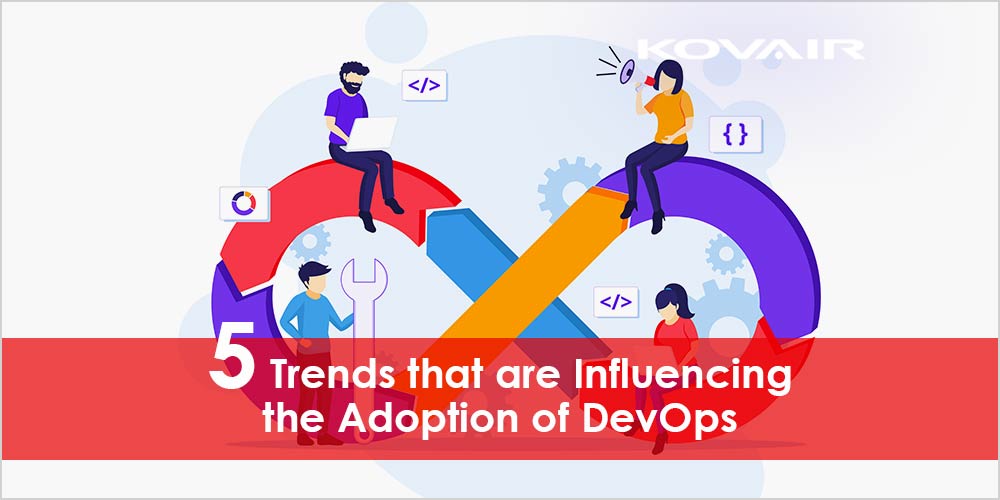Know about the trends that influence the rise of the adoption of DevOps
(Technology seems to change and adapt itself to the newest opportunity. Let’s find out what’s trending today.)
DevOps and DevSecOps have seen unprecedented growth in the working of several firms and the way they approach software development and management. Terms like DevOps are often confused with general expressions like organized and executed software development. But these concern specific tools and practices in the tech world. Both the approaches are still in their development stage, and what we see today may not be the same as the final product.
Understanding how DevOps work may not be as easy as going through slots online, but we have tried to explain the concept and trends that positively influence the operations. Therefore, let us not beat about the bush anymore and get straight into the article.
What is DevOps?
The DevOps process involves an amalgamation of software development and IT operations. The major objective is to reduce the system’s development life cycle, which can provide high software quality along with continuous delivery.
Although it is still in the process and has not acquired its complete potential, it is becoming quite popular. It has revolutionized the manner in which several firms view and handle software development and management. The main principles of DevOps are workflow automation, ownership, and rapid feedback.
[the_ad id=”2867″]
5 trends that are influencing the adoption of DevOps
Now that we have an idea about what DevOps is, let us proceed in explaining the DevOps trends.
Monolithic to Microservice Architecture
Architecture refers to the collection of protocols concerning the structure, utility, and execution of software applications. The previous model of software operations has been inflexible and massive which restricts compatibility.
The need to shift to lightweight and quick software has been a propelling factor in DevOps adoption. It is easier for teams to debug, code, and deploy software nimbly and operate collaboratively. The microservice architecture allows the user to install and maintain systems in a more organized manner. Now that software deployment is mainly being handled by container hierarchies, architectural change is inevitable. It calls for a gradual shift.
This trend also has its critics and can be challenging for organizations. But with time and more development, it is bound to become the way for future enterprises.
Cloud as default
Although the cloud is not something brand-new and running for almost a decade now, it has helped in accelerating the DevOps model. Earlier, not having a similar technology acted as an impediment to the development of DevOps. Planning the transition was a huge question of concern. Cloud services can be securely accessed by every member of the team, be it staff, the customer care department, or the developers. It has made collaborating easier and way more secure than it was a few years back.
Release and deployment automation
Earlier, when everything had to be done manually, one had to move software between the process of testing and production environments. It was quite a taxing task and entailed the risk of being faulty on some occasions because it was done manually. Whenever a new version was built or any update was added, one had to feed the data.
But since the advent of release and deployment automation, every firm does the job with the push of a button. Sophisticated software applications have made the process automatic. This has also boosted the reliability of the system. With the employment of automation, the need for the DevOps team increased.
Nimble infrastructure
Movements towards agility and flexibility have always propelled newer and more sophisticated developments. Be in the field of the industrial revolution or the technological boom, people have always found ways to adapt and expand.
Even today, the agile infrastructure that every firm has undertaken in terms of computer operations has necessitated the need for DevOps. Without it, business platforms and sites will find it extremely difficult to handle.
AI and ML
AI and ML tools have also transformed the software front to a great extent. Although DevOps tools and teams are looking for ways to fully incorporate these, one can easily look at the graph and depict that they will soon come in full swing. The process it will undertake is not that clear, but with the neck break speed that AI is being incorporated everywhere, it will be naive to think that the DevOps operations will not spread their wings to cover AI and ML.
Developers are looking for a system that can implement AI in all functions. This means, there will be little need for human labor and most of the tasks will be done by computers. These factors also contribute to influencing DevOps development.
Benefits of DevOps
DevOps make the work much easier by relying less on manual functions and more on the software. This decreases the chance of human error. Besides that, there are several benefits of adopting DevOps for enterprises:
- It helps enterprises in rapidly responding to changing needs of the business and customer care.
- Vulnerabilities can be detected and mitigated at an early stage.
- Application security testing.
- The channel and software become more secure against cybercrimes.
- A better backup is given in case of system failure.
- Quality assurance testing.
Conclusion
The entire function of DevOps is to make life easier for people who handle data and work with software. And that’s about everyone today! Every firm and enterprise looks for a neater way of operating each day. DevOps is not completely established. And this is more of a positive than negative, as it leaves room for even more advancement.
The world of technology changes each day, and having a system that is superior to others and still gaining more and more power is what the world needs. The day is not far away when DevOps will incorporate all the good things and become the techiest thing.



